使用 UnmarshalBSON 对动态接口进行解组的例子与已知密钥相关
大家好,我们又见面了啊~本文《使用 UnmarshalBSON 对动态接口进行解组的例子与已知密钥相关》的内容中将会涉及到等等。如果你正在学习Golang相关知识,欢迎关注我,以后会给大家带来更多Golang相关文章,希望我们能一起进步!下面就开始本文的正式内容~
我有一个 foo 类型的对象,其中包含一个 activationinterface 接口;该对象保存在 mongodb 中,由于内部对象的基础类型未知,我无法将其取回。
我按如下方式实现了 unmarshalbson 但没有成功,因为即使在设置了接口的具体类型之后,解组器现在仍然执行底层类型,因为我仍然收到错误: 解码关键行为错误:找不到 main.activationinterface 的解码器
你知道我该如何实现这一目标吗?
我在这里发现了一些接近工作的东西,所以我不明白为什么我的不是:unmarshaldynamic json based on a type key 我看不出我做错了什么以及有什么不同......!
编辑:我更新了代码以与 json 进行比较。 unmarshaljson 使用完全相同的代码可以很好地工作,而 unmarshalbson 仍然失败。
package main
import (
"fmt"
"log"
"go.mongodb.org/mongo-driver/bson"
)
type foo struct {
Type string `bson:"type"`
Act ActivationInterface
}
type ActivationInterface interface{}
type Activation1 struct {
Name string `bson:"name"`
}
type Activation2 struct {
Address string `bson:"adress"`
}
func (q *foo) UnmarshalBSON(data []byte) error {
// Unmarshall only the type
fooTemp := new(struct {
Type string `bson:"type"`
})
if err := bson.Unmarshal(data, fooTemp); err != nil {
return err
}
fmt.Println(fooTemp.Type)
// Set the type to the prop
switch fooTemp.Type {
case "act1":
// q.Act = &Activation1{}
q.Act = new(Activation1)
case "act2":
// q.Act = &Activation2{}
q.Act = new(Activation2)
default:
fmt.Println("DEFAULT")
}
// Call Unmarshal again
type Alias foo // avoids infinite recursion using a type alias
return bson.Unmarshal(data, (*Alias)(q))
}
func main() {
foo1 := foo{
Type: "act1",
Act: Activation1{
Name: "name: act1",
},
}
foo2 := foo{
Type: "act2",
Act: Activation2{
Address: "adress: act2",
},
}
// Marshal
m1, err := bson.Marshal(foo1)
if err != nil {
log.Fatal(err)
}
m2, err := bson.Marshal(foo2)
if err != nil {
log.Fatal(err)
}
//fmt.Println(m1, m2)
// Unmarshal
var u1, u2 foo
err = bson.Unmarshal(m1, &u1)
if err != nil {
fmt.Println("1 -> ", err) // error decoding key act: no decoder found for main.ActivationInterface
}
err = bson.Unmarshal(m2, &u2)
if err != nil {
fmt.Println("2 -> ", err) // error decoding key act: no decoder found for main.ActivationInterface
}
fmt.Println(foo1.Type, ":", u1.Act.(*Activation1).Name)
fmt.Println(foo2.Type, ":", u2.Act.(*Activation2).Address)
}
go演示:https://go.dev/play/p/bhmy6-zlsyq
几乎相同的代码,但使用 json 并工作:https://go.dev/play/p/v5hlrq_-ls3
谢谢!
正确答案
在结构中使用接口时,unmarshall 无法确定要选择哪个“实现”...您必须根据“类型”字段手动执行此操作。通常,unmarshall 方法会放置一个接口{} 的映射,即键值存储。 无论如何,回到你的问题,你必须将接口数据存储在 bson.raw (字节片)中,并通过选择正确的结构手动进行解组。
package main
import (
"fmt"
"log"
"go.mongodb.org/mongo-driver/bson"
)
type foo struct {
Type string `bson:"type"`
Act ActivationInterface
}
type ActivationInterface interface{}
type Activation1 struct {
Name string `bson:"name"`
}
type Activation2 struct {
Address string `bson:"adress"`
}
func (q *foo) UnmarshalBSON(data []byte) error {
// Unmarshall only the type
fooTemp := new(struct {
Type string `bson:"type"`
Act bson.Raw
})
if err := bson.Unmarshal(data, fooTemp); err != nil {
return err
}
fmt.Println(fooTemp.Type)
// Set the type to the prop
switch fooTemp.Type {
case "act1":
// q.Act = &Activation1{}
a := Activation1{}
err := bson.Unmarshal(fooTemp.Act, &a)
if err != nil {
return err
}
q.Act = a
case "act2":
// q.Act = &Activation2{}
a := Activation2{}
err := bson.Unmarshal(fooTemp.Act, &a)
if err != nil {
return err
}
q.Act = a
default:
fmt.Println("DEFAULT")
return fmt.Errorf("unknown type: %v", fooTemp.Type)
}
return nil
}
func main() {
foo1 := foo{
Type: "act1",
Act: Activation1{
Name: "name: act1",
},
}
foo2 := foo{
Type: "act2",
Act: Activation2{
Address: "adress: act2",
},
}
// Marshal
m1, err := bson.Marshal(foo1)
if err != nil {
log.Fatal(err)
}
m2, err := bson.Marshal(foo2)
if err != nil {
log.Fatal(err)
}
//fmt.Println(m1, m2)
// Unmarshal
var u1, u2 foo
err = bson.Unmarshal(m1, &u1)
if err != nil {
fmt.Println("1 -> ", err) // error decoding key act: no decoder found for main.ActivationInterface
}
err = bson.Unmarshal(m2, &u2)
if err != nil {
fmt.Println("2 -> ", err) // error decoding key act: no decoder found for main.ActivationInterface
}
fmt.Println(foo1.Type, ":", u1.Act.(Activation1).Name)
fmt.Println(foo2.Type, ":", u2.Act.(Activation2).Address)
}
https://go.dev/play/p/CG2SlEknNrO
今天关于《使用 UnmarshalBSON 对动态接口进行解组的例子与已知密钥相关》的内容就介绍到这里了,是不是学起来一目了然!想要了解更多关于的内容请关注golang学习网公众号!
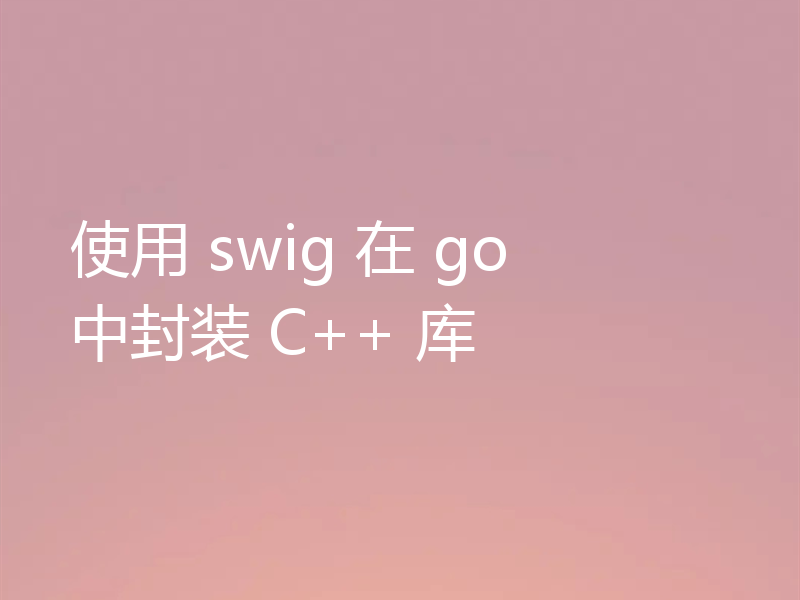 使用 swig 在 go 中封装 C++ 库
使用 swig 在 go 中封装 C++ 库
- 上一篇
- 使用 swig 在 go 中封装 C++ 库

- 下一篇
- Google Logging 客户端库在使用 Google 云功能时遇到登录问题的原因是什么?
-

- Golang · Go问答 | 1年前 |
- 在读取缓冲通道中的内容之前退出
- 139浏览 收藏
-
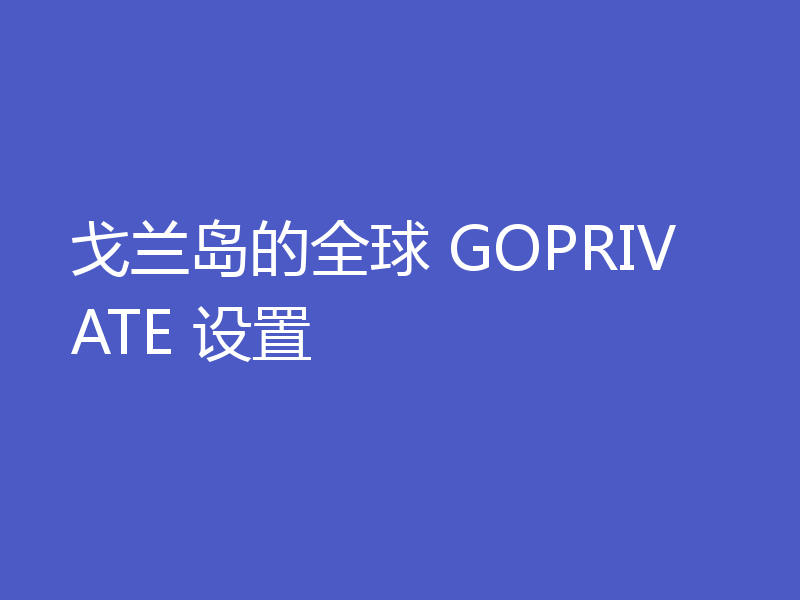
- Golang · Go问答 | 1年前 |
- 戈兰岛的全球 GOPRIVATE 设置
- 204浏览 收藏
-

- Golang · Go问答 | 1年前 |
- 如何将结构作为参数传递给 xml-rpc
- 325浏览 收藏
-

- Golang · Go问答 | 1年前 |
- 如何用golang获得小数点以下两位长度?
- 478浏览 收藏
-
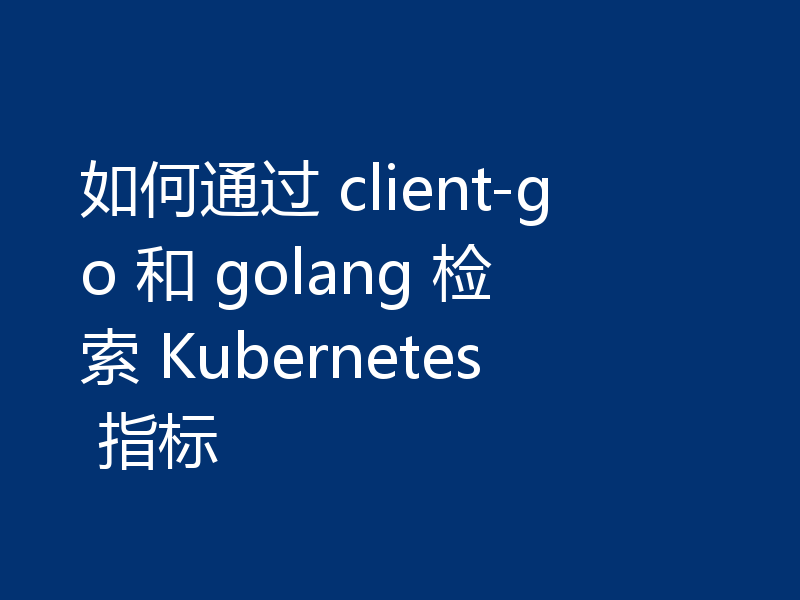
- Golang · Go问答 | 1年前 |
- 如何通过 client-go 和 golang 检索 Kubernetes 指标
- 486浏览 收藏
-

- Golang · Go问答 | 1年前 |
- 将多个“参数”映射到单个可变参数的习惯用法
- 439浏览 收藏
-
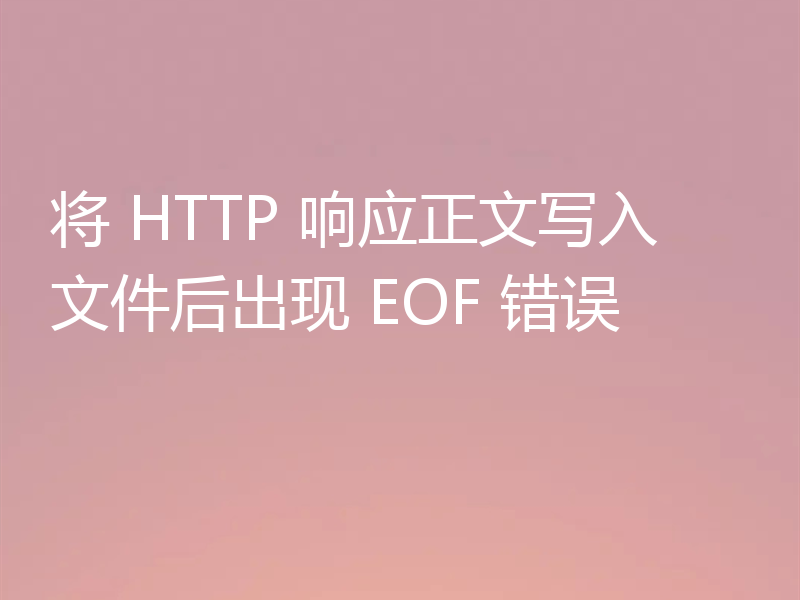
- Golang · Go问答 | 1年前 |
- 将 HTTP 响应正文写入文件后出现 EOF 错误
- 357浏览 收藏
-

- Golang · Go问答 | 1年前 |
- 结构中映射的匿名列表的“复合文字中缺少类型”
- 352浏览 收藏
-
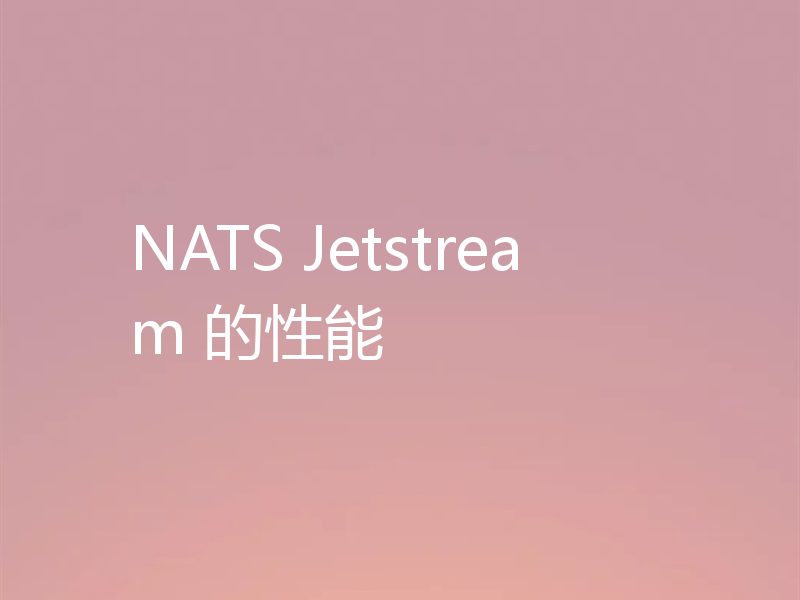
- Golang · Go问答 | 1年前 |
- NATS Jetstream 的性能
- 101浏览 收藏
-
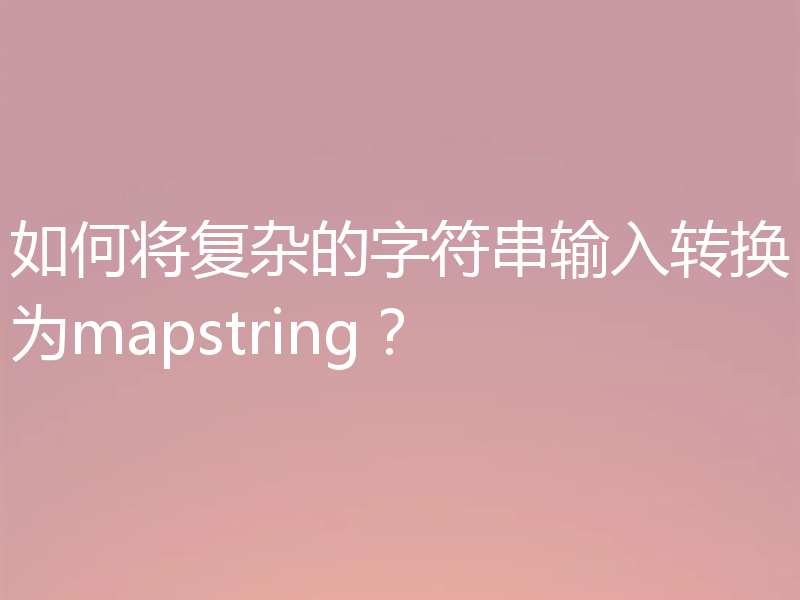
- Golang · Go问答 | 1年前 |
- 如何将复杂的字符串输入转换为mapstring?
- 440浏览 收藏
-
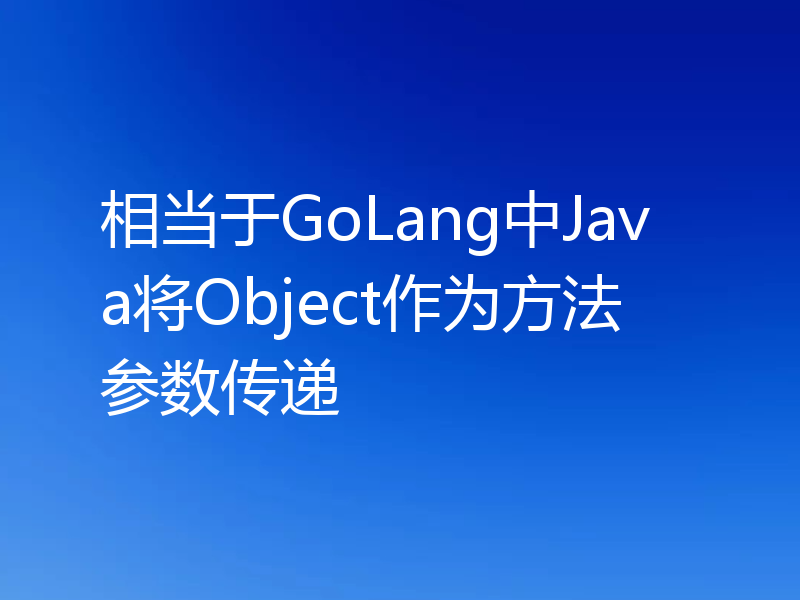
- Golang · Go问答 | 1年前 |
- 相当于GoLang中Java将Object作为方法参数传递
- 212浏览 收藏
-
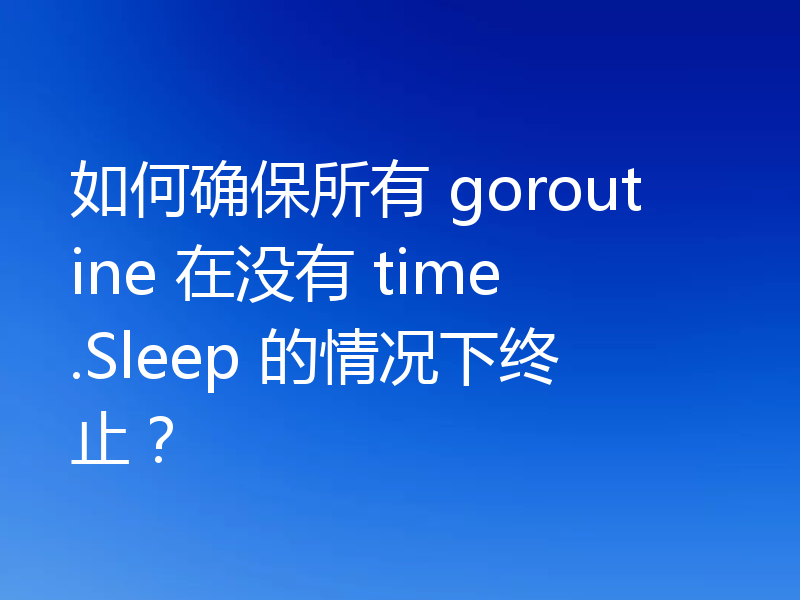
- Golang · Go问答 | 1年前 |
- 如何确保所有 goroutine 在没有 time.Sleep 的情况下终止?
- 143浏览 收藏
-

- 前端进阶之JavaScript设计模式
- 设计模式是开发人员在软件开发过程中面临一般问题时的解决方案,代表了最佳的实践。本课程的主打内容包括JS常见设计模式以及具体应用场景,打造一站式知识长龙服务,适合有JS基础的同学学习。
- 543次学习
-

- GO语言核心编程课程
- 本课程采用真实案例,全面具体可落地,从理论到实践,一步一步将GO核心编程技术、编程思想、底层实现融会贯通,使学习者贴近时代脉搏,做IT互联网时代的弄潮儿。
- 516次学习
-

- 简单聊聊mysql8与网络通信
- 如有问题加微信:Le-studyg;在课程中,我们将首先介绍MySQL8的新特性,包括性能优化、安全增强、新数据类型等,帮助学生快速熟悉MySQL8的最新功能。接着,我们将深入解析MySQL的网络通信机制,包括协议、连接管理、数据传输等,让
- 500次学习
-

- JavaScript正则表达式基础与实战
- 在任何一门编程语言中,正则表达式,都是一项重要的知识,它提供了高效的字符串匹配与捕获机制,可以极大的简化程序设计。
- 487次学习
-

- 从零制作响应式网站—Grid布局
- 本系列教程将展示从零制作一个假想的网络科技公司官网,分为导航,轮播,关于我们,成功案例,服务流程,团队介绍,数据部分,公司动态,底部信息等内容区块。网站整体采用CSSGrid布局,支持响应式,有流畅过渡和展现动画。
- 485次学习
-

- ChatExcel酷表
- ChatExcel酷表是由北京大学团队打造的Excel聊天机器人,用自然语言操控表格,简化数据处理,告别繁琐操作,提升工作效率!适用于学生、上班族及政府人员。
- 3425次使用
-

- Any绘本
- 探索Any绘本(anypicturebook.com/zh),一款开源免费的AI绘本创作工具,基于Google Gemini与Flux AI模型,让您轻松创作个性化绘本。适用于家庭、教育、创作等多种场景,零门槛,高自由度,技术透明,本地可控。
- 3630次使用
-

- 可赞AI
- 可赞AI,AI驱动的办公可视化智能工具,助您轻松实现文本与可视化元素高效转化。无论是智能文档生成、多格式文本解析,还是一键生成专业图表、脑图、知识卡片,可赞AI都能让信息处理更清晰高效。覆盖数据汇报、会议纪要、内容营销等全场景,大幅提升办公效率,降低专业门槛,是您提升工作效率的得力助手。
- 3664次使用
-

- 星月写作
- 星月写作是国内首款聚焦中文网络小说创作的AI辅助工具,解决网文作者从构思到变现的全流程痛点。AI扫榜、专属模板、全链路适配,助力新人快速上手,资深作者效率倍增。
- 4801次使用
-

- MagicLight
- MagicLight.ai是全球首款叙事驱动型AI动画视频创作平台,专注于解决从故事想法到完整动画的全流程痛点。它通过自研AI模型,保障角色、风格、场景高度一致性,让零动画经验者也能高效产出专业级叙事内容。广泛适用于独立创作者、动画工作室、教育机构及企业营销,助您轻松实现创意落地与商业化。
- 4031次使用
-
- GoLand调式动态执行代码
- 2023-01-13 502浏览
-
- 用Nginx反向代理部署go写的网站。
- 2023-01-17 502浏览
-
- Golang取得代码运行时间的问题
- 2023-02-24 501浏览
-
- 请问 go 代码如何实现在代码改动后不需要Ctrl+c,然后重新 go run *.go 文件?
- 2023-01-08 501浏览
-
- 如何从同一个 io.Reader 读取多次
- 2023-04-11 501浏览



